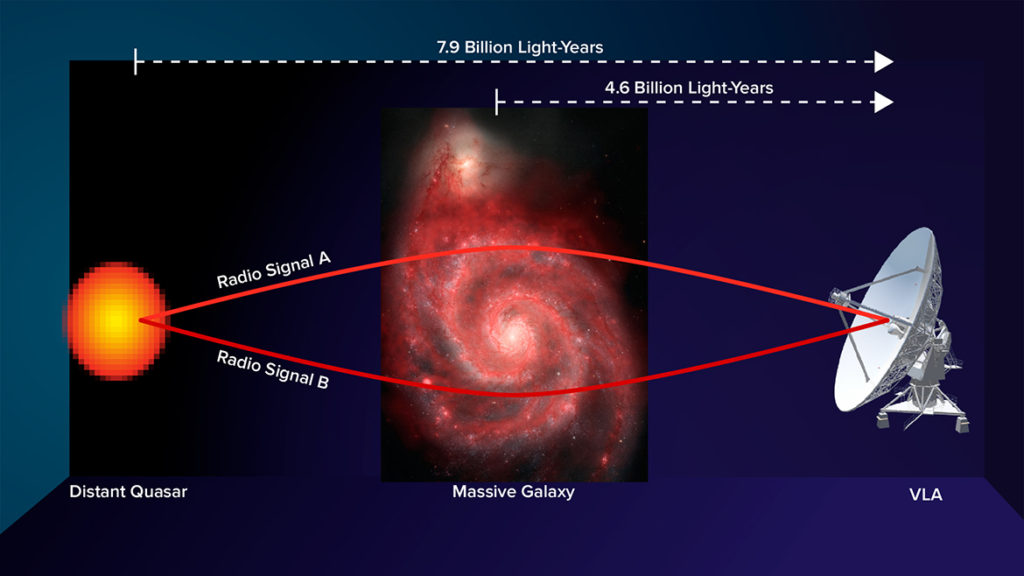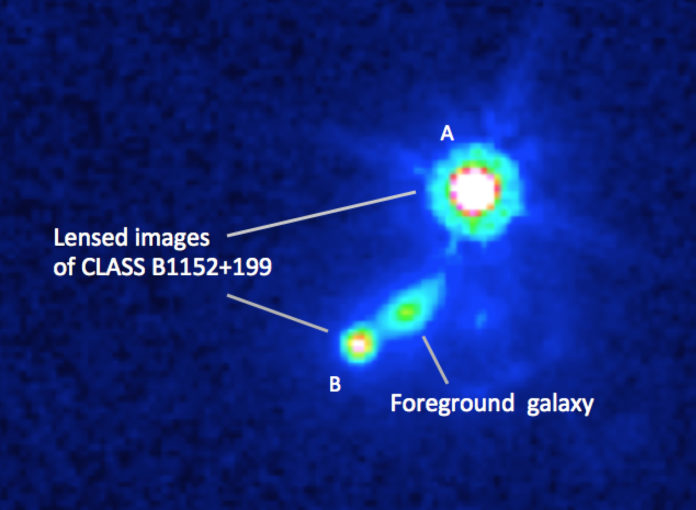Using the National Science Foundation’s Karl G. Jansky Very Large Array (VLA) scientists managed to measure the magnetic field of a galaxy that’s situated almost five billion light-years away from Earth. It’s a great achievement for the team and one that will give new insight as to the origin of these magnetic fields and how they evolved over time.

Credit: Bill Saxton, NRAO/AUI/NSF; NASA, Hubble Heritage Team, (STScI/AURA), ESA, S. Beckwith (STScI). Additional Processing: Robert Gendler
The VLA was studying a star-forming galaxy that lies between the Earth and a more distant quasar. Radio waves that have been detected to be coming from this quasar that is nearly 8 billion years away and polarized. “The polarization of the waves coming from the background quasar, combines with the fact that the waves producing the two lensed images traveled through different parts of the intervening galaxy, allowed us to learn some important facts about the galaxy’s magnetic field,” explained Sui Ann Mao, Minerva Research Group leader for the Max Planck Institute for Radio Astronomy.
After careful analysis of the VLA images, the researchers found there was a distinct difference between both gravitationally-lensed images in regards to changes in the waves’ polarization. Essentially this means that different regions of the galaxy affect the waves differently. As Mao confirmed, “The difference tells us that this galaxy has a large-scale, coherent magnetic field, similar to those we see in nearby galaxies in the present day universe.”
This is a great result for astronomers and provides an important insight into how galactic fields form and evolve over time. “The results of our study support the idea that galaxy magnetic fields are generated by a rotating dynamo effect, similar to the process that produces the Sun’s magnetic field,” says Mao. However, there are other processes that might be producing the magnetic fields. To determine which process is at work, we need to go still further back in time — to more distant galaxies — and make similar measurements of their magnetic fields.”
More News to Read
- This New Nanotechnology Helps Killing Cancer Cells Without Harming Healthy Cells
- Processing Biofuels Just Got Cheaper and Greener Thanks to This Catalyst
- Meet the Engineer Who 3D Prints Revolutionary Human-Robotic Arms
- Meteor Shower From Dead Comet Sighted Again
- Will Tesla 3 Pre-orders See the Light of Day and Will This Car Create…

